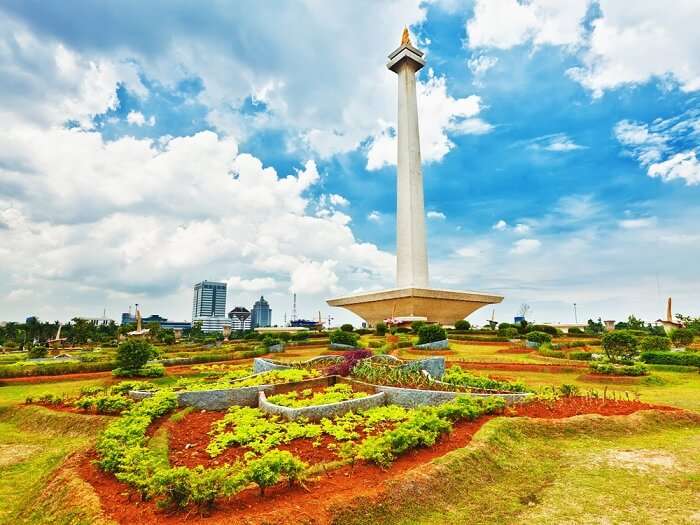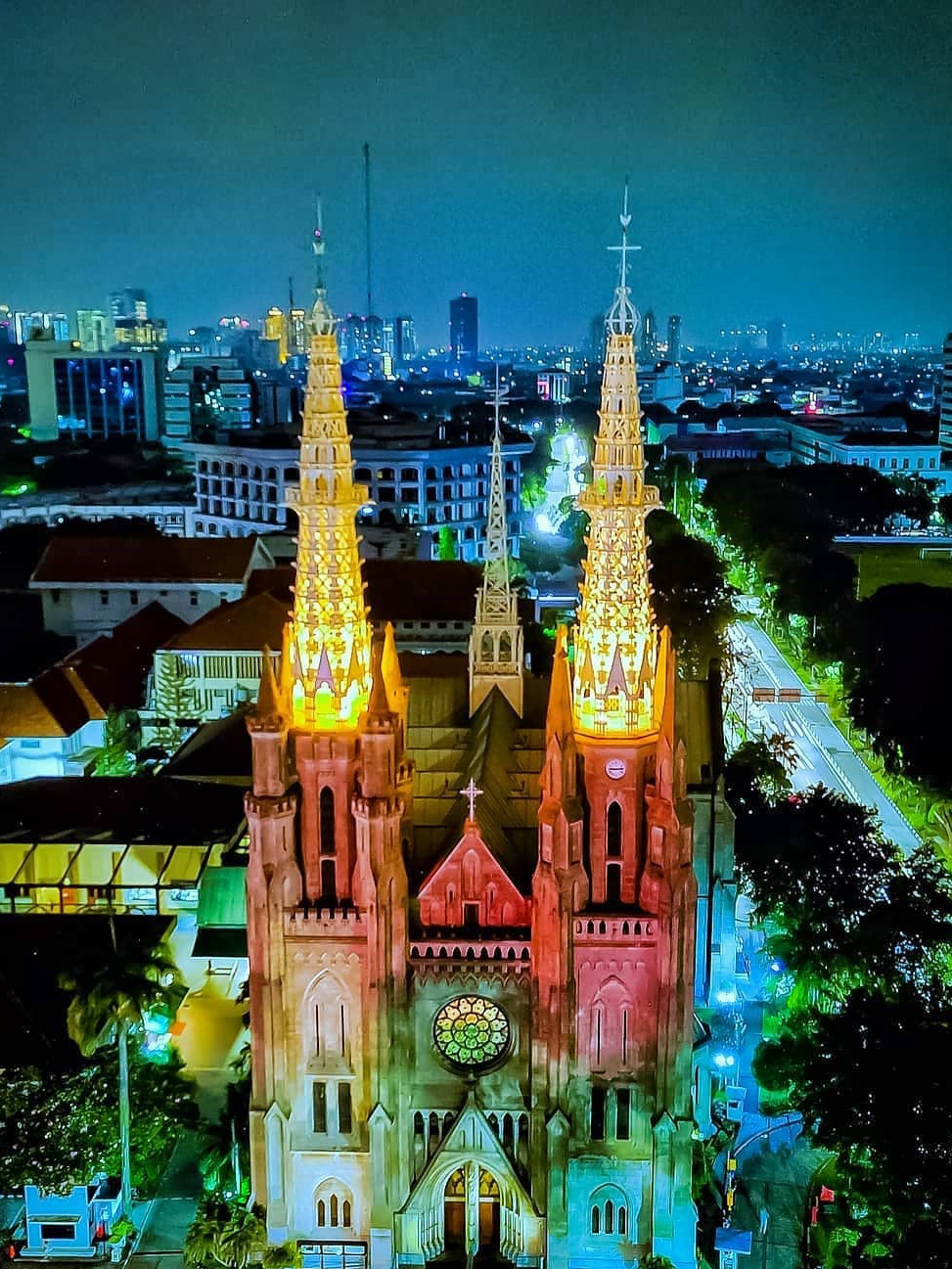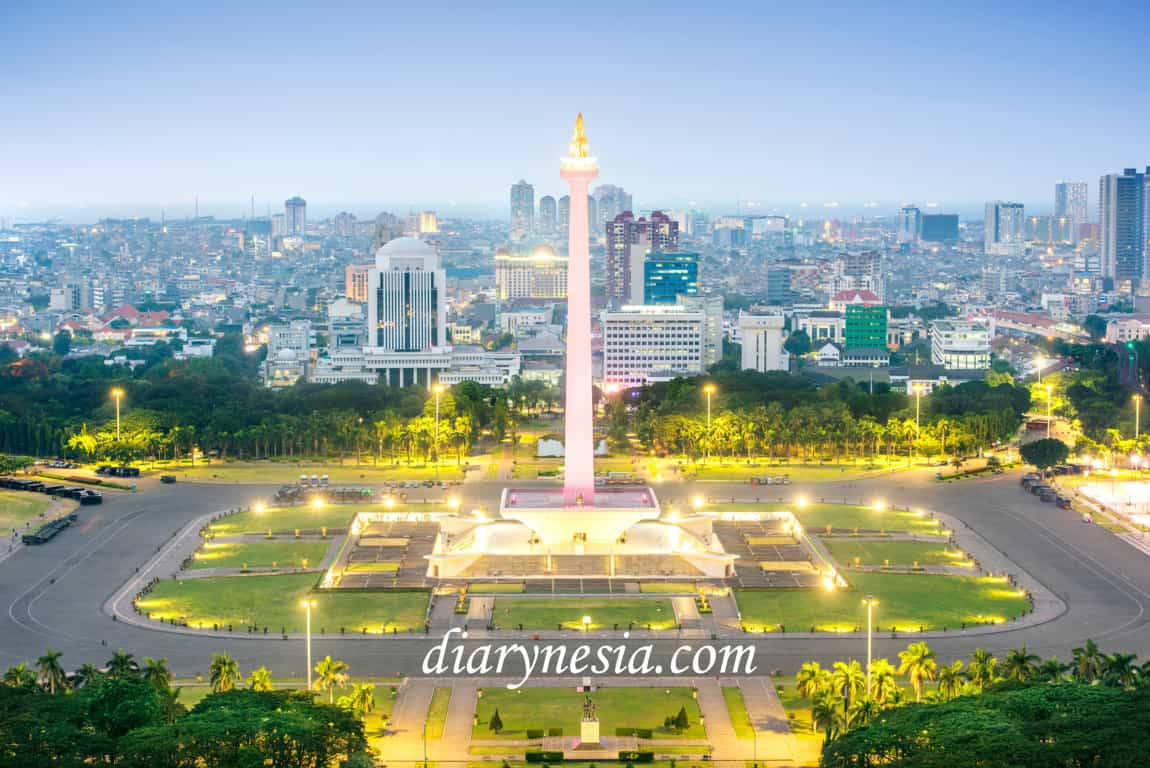
Jakarta, the sprawling capital of Indonesia, is a city that assaults the senses and captivates the soul. A pulsating metropolis built on the foundations of centuries of history, it’s a place where ancient traditions blend seamlessly with hyper-modern aspirations. From the remnants of Dutch colonial grandeur to the towering skyscrapers of its burgeoning business district, Jakarta offers a captivating tapestry of experiences for every traveler. This comprehensive guide will delve into the city’s top attractions, its rich history, practical travel tips, accommodation options, transportation networks, and the best times to experience its vibrant energy.
A Journey Through Time: Jakarta’s Rich History
Jakarta’s story is one of transformation, resilience, and constant evolution. Its strategic location on the northwestern coast of Java has made it a coveted port for centuries, attracting traders and conquerors alike.

Related Articles about Jakarta: A Metropolis of Contrasts, Where History Meets the Future:
- Hungary’s Regal Retreats: Unveiling the Best Hotels and the Enchantment of a Nation
- Dublin: A Guide to the Emerald Isle’s Vibrant Capital
- Slovenia’s Crown Jewels: Unveiling the Best Hotels Amidst Alpine Majesty and Adriatic Charm
- Bali: A Paradise Found – Your Guide to the Island of Gods
- Switzerland: Where Alpine Majesty Meets Timeless Luxury – A Guide to its Best Hotels and Unforgettable Experiences
- Sunda Kelapa (15th-16th Century): The city’s origins lie in the bustling port of Sunda Kelapa, a thriving center of trade under the Sunda Kingdom. It was here that spices, textiles, and other goods flowed through, connecting Java to the wider world.
- Jayakarta and Batavia (16th-20th Century): In 1527, Fatahillah, a ruler from the Sultanate of Demak, conquered Sunda Kelapa and renamed it Jayakarta, marking a significant shift in power. However, its most enduring colonial name came with the Dutch East India Company (VOC). In 1619, Jan Pieterszoon Coen seized the city and rebuilt it as Batavia, a fortified administrative and trading hub. For over three centuries, Batavia served as the capital of the Dutch East Indies, witnessing periods of immense prosperity, brutal exploitation, and cultural exchange. The city’s layout, architecture, and even its street names bear the indelible mark of Dutch influence.
- Djakarta and Jakarta (20th Century-Present): During World War II, the Japanese occupied Batavia, and upon Indonesia’s independence in 1945, the city was renamed Djakarta, later evolving to its current spelling, Jakarta. Since then, it has undergone a dramatic metamorphosis, transforming from a colonial city into the dynamic capital of a vast archipelago. The post-independence era has seen rapid urbanization, economic growth, and the construction of modern infrastructure, creating the megacity we know today.
Unveiling the Treasures: Top Attractions in Jakarta
Jakarta’s allure lies in its diverse range of attractions, catering to history buffs, culture vultures, foodies, and modern explorers.
1. Kota Tua (Old Batavia): A Glimpse into the Colonial Past
The heart of historical Jakarta, Kota Tua, is a must-visit for anyone seeking to understand the city’s colonial legacy. This UNESCO World Heritage site is a beautifully preserved area where Dutch architecture dominates the landscape.

- Fatahillah Square: The central hub of Kota Tua, this expansive square was once the administrative and social center of Batavia. Today, it’s a lively spot where street performers entertain, artists display their work, and locals and tourists alike gather.
- Jakarta History Museum (Museum Fatahillah): Housed in the former Town Hall of Batavia, this museum offers a fascinating journey through Jakarta’s past, from its pre-colonial days to the present. The building itself is a magnificent example of Dutch colonial architecture.
- Museum Wayang (Puppet Museum): Dedicated to the rich tradition of Indonesian puppetry, this museum showcases a diverse collection of Wayang Kulit (shadow puppets) and Wayang Golek (wooden puppets) from various regions.
- Museum Seni Rupa dan Keramik (Museum of Fine Art and Ceramics): Explore a captivating collection of Indonesian art, including paintings and sculptures, alongside an impressive array of antique ceramics from Indonesia and China.
- Cafe Batavia: No visit to Kota Tua is complete without a stop at this iconic cafe, housed in a beautifully restored Dutch colonial building. Enjoy a cup of coffee or a meal while soaking in the nostalgic atmosphere and stunning views of Fatahillah Square.
2. Monumen Nasional (Monas): The Symbol of Independence
Dominating the Jakarta skyline, the National Monument (Monas) stands as a proud symbol of Indonesia’s hard-won independence.
- The Iconic Tower: This towering obelisk, topped with a golden flame, reaches a height of 132 meters. Ascend to the observation deck for panoramic views of the sprawling city.
- National History Museum: Located at the base of Monas, this museum houses dioramas depicting key moments in Indonesian history, from the struggle for independence to modern development.
- The Chamber of Independence: A sacred chamber at the base of the monument containing the original text of the Proclamation of Indonesian Independence.
3. Istiqlal Mosque & Jakarta Cathedral: A Symbol of Religious Harmony
A powerful testament to Indonesia’s religious tolerance, the Istiqlal Mosque, the largest mosque in Southeast Asia, stands directly opposite the Jakarta Cathedral, the city’s main Catholic church.
- Istiqlal Mosque: Its grand architecture, towering minaret, and spacious prayer hall are awe-inspiring. Visitors are welcome to explore the mosque, provided they dress respectfully.
- Jakarta Cathedral: A beautiful neo-Gothic structure, the cathedral offers a serene contrast to the mosque, showcasing the peaceful coexistence of different faiths in the city.
4. Taman Mini Indonesia Indah (TMII): A Miniature Indonesia
This sprawling cultural park offers a unique opportunity to experience the diverse cultures and traditions of Indonesia within a single location.
- Pavilions: Each of Indonesia’s 34 provinces has its own pavilion, showcasing traditional architecture, clothing, and crafts.
- Museums and Gardens: TMII boasts numerous museums, including a bird park, butterfly park, and various themed gardens, making it an ideal destination for families.
5. Shopping Havens: From Traditional Markets to Luxury Malls
Jakarta is a shopper’s paradise, offering an eclectic mix of retail experiences.
- Grand Indonesia & Plaza Indonesia: Two of Jakarta’s most luxurious malls, offering a vast array of international and local designer brands, department stores, and a plethora of dining options.
- Pacific Place & Senayan City: Other prominent malls catering to a wide range of shopping needs and entertainment.
- Pasar Baru: A historic market where you can find traditional Indonesian textiles, batik, clothing, and souvenirs. It’s a vibrant and bustling place to experience local commerce.
- ITC Mangga Dua: A massive wholesale and retail complex, perfect for bargain hunters seeking clothing, electronics, and accessories.
6. National Museum of Indonesia: A Treasure Trove of Artifacts
This impressive museum houses an extensive collection of artifacts, art, and historical relics that tell the story of Indonesia’s rich heritage, from prehistoric times to the present day.
7. Ancol Dreamland: Entertainment and Recreation
Located by the coast, Ancol Dreamland is a vast amusement park complex offering a variety of attractions for all ages.
- Dufan (Fantasy World): A thrilling amusement park with rides and attractions.
- Sea World Ancol: An aquarium showcasing a diverse marine life.
- Atlantis Water Adventure: A water park perfect for a refreshing escape.
Navigating the Metropolis: Travel Tips for Jakarta
- Visa Requirements: Check the visa requirements for your nationality before traveling to Indonesia. Many nationalities can obtain a visa on arrival or are visa-exempt for short stays.
- Currency: The Indonesian Rupiah (IDR) is the official currency. ATMs are widely available, and credit cards are accepted in most hotels, restaurants, and larger shops.
- Language: Bahasa Indonesia is the official language. While English is spoken in tourist areas and by many younger Indonesians, learning a few basic Bahasa Indonesia phrases will be greatly appreciated.
- Etiquette: Indonesians are generally polite and respectful. Dress modestly when visiting religious sites. Remove your shoes before entering a mosque or someone’s home.
- Health: Consult your doctor about recommended vaccinations and malaria precautions before your trip. Drink bottled water to avoid stomach issues.
- Safety: Jakarta is a relatively safe city, but it’s always wise to be aware of your surroundings, especially in crowded areas. Keep your valuables secure and avoid displaying them ostentatiously.
- Haggling: In traditional markets and smaller shops, haggling is expected. Approach it with a friendly attitude and a smile.
A Haven for Every Traveler: Accommodation Options
Jakarta offers a diverse range of accommodation to suit every budget and preference.
- Luxury Hotels: For those seeking unparalleled comfort and service, Jakarta boasts world-class luxury hotels like The Ritz-Carlton, Mandarin Oriental, and Shangri-La, offering stunning city views, fine dining, and impeccable amenities.
- Mid-Range Hotels: Numerous reputable mid-range hotels provide comfortable and well-equipped rooms, often with convenient locations and good facilities. Consider brands like Mercure, Novotel, or local chains like Aryaduta.
- Budget-Friendly Options: Backpackers and budget travelers will find a plethora of guesthouses, hostels, and budget hotels scattered throughout the city, particularly in areas like South Jakarta and near popular attractions.
- Serviced Apartments: For longer stays or families, serviced apartments offer the convenience of a hotel with the privacy and space of an apartment.
Getting Around Jakarta: Transportation
Jakarta’s vastness necessitates efficient transportation. While traffic can be challenging, various options are available:
- TransJakarta Bus Rapid Transit (BRT): This extensive network of dedicated bus lanes is an affordable and relatively efficient way to navigate the city, connecting major hubs and attractions.
- Taxis: Metered taxis are readily available. Use reputable companies like Blue Bird or Silver Bird for reliable service. Ride-hailing apps like Grab and Gojek are also extremely popular and convenient, offering both car and motorcycle taxi options.
- Trains (KRL Commuter Line): For inter-city travel or reaching areas outside the immediate city center, the KRL Commuter Line is a cost-effective option.
- MRT (Mass Rapid Transit): Jakarta’s modern MRT system is a growing network that offers a fast and efficient way to travel between key areas, bypassing traffic congestion.
- Motorcycle Taxis (Ojek): For short distances, especially in congested areas, motorcycle taxis are a quick and popular choice. Use the ride-hailing apps for safety and fixed prices.
The Perfect Time to Visit: Jakarta’s Best Seasons
Jakarta experiences a tropical climate with two main seasons:
- Dry Season (May to September): This is generally considered the best time to visit Jakarta. The weather is typically sunny with lower humidity, making outdoor exploration more comfortable. Expect average temperatures around 30-32°C (86-90°F).
- Rainy Season (October to April): During this period, Jakarta experiences frequent and sometimes heavy rainfall, often in the afternoon. While showers can be intense, they are usually short-lived. Temperatures remain warm, and humidity is higher. Despite the rain, many attractions remain accessible, and you might find fewer crowds and potentially lower accommodation prices.
A Word on "Best Time": While the dry season is ideal, Jakarta is a year-round destination. The city’s vibrant indoor attractions, bustling malls, and diverse culinary scene ensure there’s always something to do, regardless of the weather.
Conclusion: A City of Endless Discovery
Jakarta is a city that defies easy categorization. It’s a dynamic force, constantly reinventing itself while holding onto its rich historical tapestry. From the echoes of Dutch colonialism in Kota Tua to the gleaming skyscrapers of its modern business districts, Jakarta offers a captivating blend of old and new. Its warm hospitality, diverse culinary landscape, and array of attractions promise an unforgettable journey for every traveler. So, pack your bags, embrace the vibrant energy, and prepare to be enchanted by the multifaceted charm of Jakarta.





